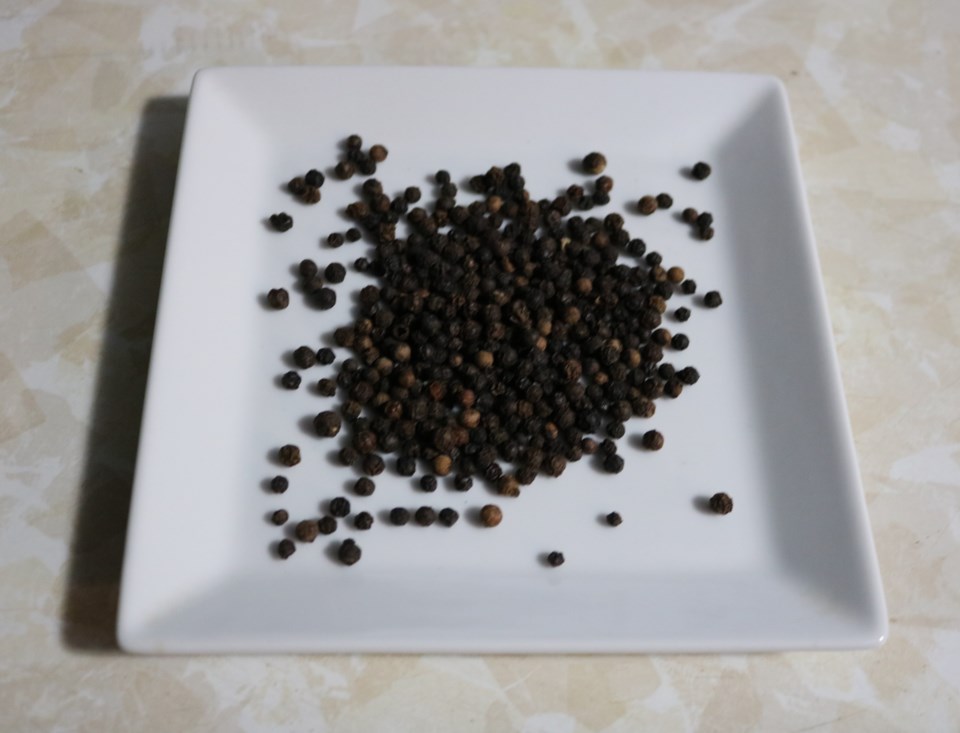I think we would all agree that black pepper is probably one of the most used and most loved spices. It has been around since at least 2000BC; the Egyptians, who seemed to always be on the cutting edge of the latest new things, loved pepper, but they used it more for medicinal purposes. The ancient Greeks and Romans were also pepper people, and I read that there was a cookbook written over two thousand years ago and almost every recipe in it included pepper!
Pepper continued to be a very popular spice through the centuries, earning the name “black gold”. The plant that produces black pepper originated in India, though it grows in other tropic areas like Vietnam and Brazil, but when the world was going wild for pepper, the race was on among explorers to see who could reach India first and snatch up as much of the pepper market as possible!
Black pepper, also called piper nigrum, comes from a flowering vine. The dark red fruits of the pepper hang in clusters. Here’s a new word: “drupe”, which is the fruit that holds the seed that becomes a peppercorn. How the peppercorn is processed determines what kind of peppercorn we have. We’ve all seen the black peppercorns in the spice aisle at the store, as well as the jars of the mixed and exotic looking white, pink and green peppercorns. Black peppercorns are the dried, unripe fruits and white comes from the ripe fruits. Green peppercorns are dried and unripe but might be cured in brine. And guess what, the pink peppercorns are actually from a whole different plant: the Peruvian pepper tree!
Farmers who grow the pepper plants are working with a vine plant that spreads and must be supported on trellises. The plants like moderately moist and rich soil that is well drained. They also like to be mulched. Farmers create new plants from cuttings; the new plants must be watered regularly for three years and then finally the plant will starts producing fruit after four or five years. It is a long process to bring that delicious flavor to our kitchen tables!
And we all love pepper so much that pepper farmers produce well over a million tonnes of pepper every year! Next time you pick up your pepper shaker, just think of all the work involved to make that delicious spice!
We’re looking forward to spring, but still have a little way to go, so this is a great time to increase our gardening knowledge. Visit the University of Saskatchewan at www.gardening.usask.ca/public-workshops and see the amazing selections of two hour, on-line sessions that are available. “Houseplants 101” is coming up on Thursday, January 13 at 7PM, and “Rural Design” on Monday, January 17. There is a full list of sessions on many great topics, so check it out. I’ve taken several of these sessions and they are really interesting and informative. Visit the Yorkton hort society at www.yorktonhort.ca and see what’s new. Thank you to our friends at Yorkton This Week for their fine work each week. Gardeners, hope you’re already perusing your seed catalogues! Stay warm and have a great week!






